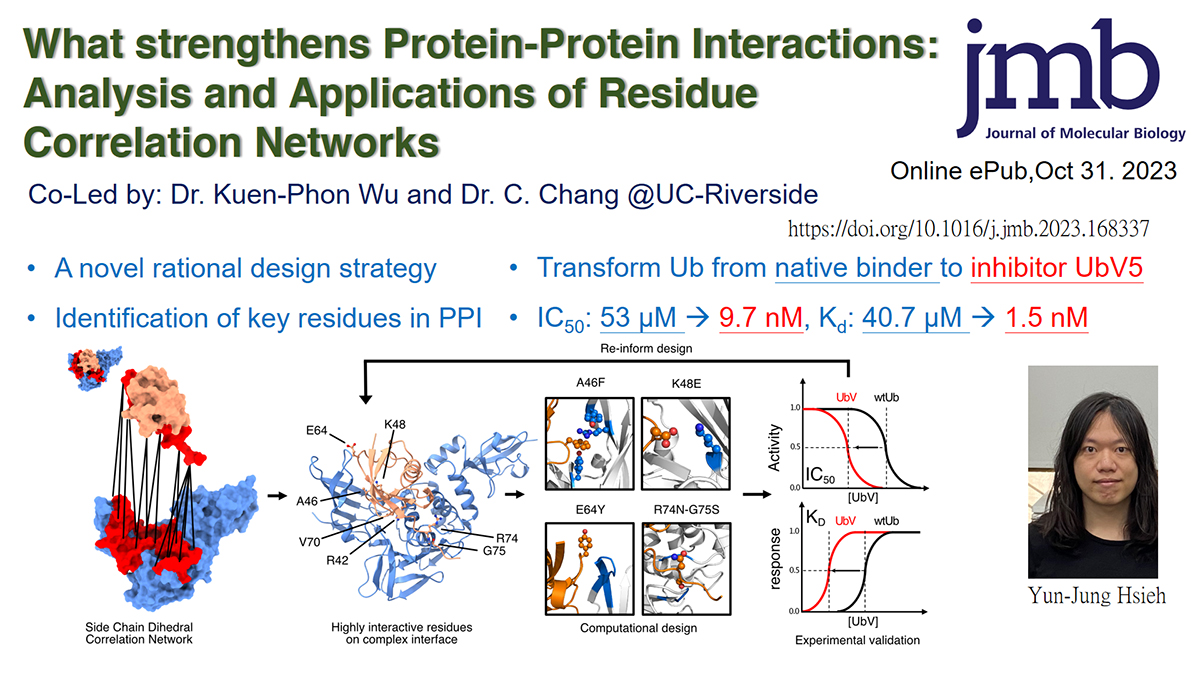
 中央研究院 生物化學研究所
中央研究院 生物化學研究所
Identifying residues critical to protein-protein binding and efficient design of stable and specific protein binders are challenging tasks. Extending beyond the direct contacts in a protein-protein binding interface, our study employs computational modeling to reveal the essential network of residue interactions and dihedral angle correlations critical in protein-protein recognition. We hypothesized that mutating residues exhibiting highly correlated dynamic motion within the interaction network could efficiently optimize protein-protein interactions to create tight and selective protein binders. We tested this hypothesis using the ubiquitin (Ub) and MERS coronaviral papain-like protease (PLpro) complex, since Ub is a central player in multiple cellular functions and PLpro is an antiviral drug target. Our designed ubiquitin variant (UbV) hosting three mutated residues displayed a ∼3,500-fold increase in functional inhibition relative to wild-type Ub. Further optimization of two C-terminal residues within the Ub network resulted in a KD of 1.5 nM and IC50 of 9.7 nM for the five-point Ub mutant, eliciting 27,500-fold and 5,500-fold enhancements in affinity and potency, respectively, as well as improved selectivity, without destabilizing the UbV structure. Our study highlights residue correlation and interaction networks in protein-protein interactions, and introduces an effective approach to design high-affinity protein binders for cell biology research and future therapeutics.
